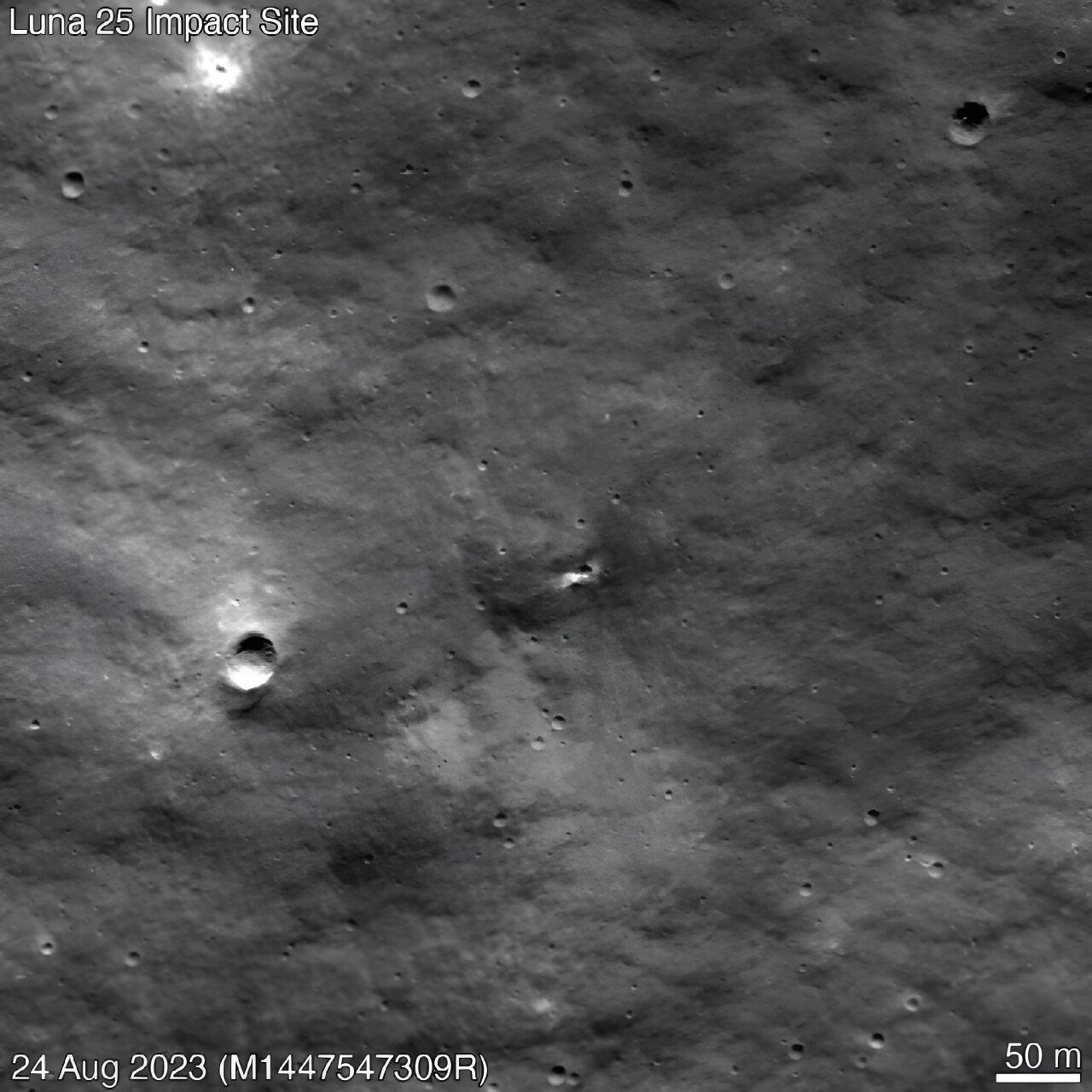In a significant discovery, NASA's Lunar Reconnaissance Orbiter (LRO) has identified a newly formed crater on the lunar surface, and preliminary evidence suggests that it was created by the crash landing of Russia's Luna-25 probe. This revelation comes just two weeks after the ill-fated mission, which was intended to mark Russia's return to lunar exploration.
 |
| NASA's Lunar Reconnaissance Orbiter spotted a small new crater on the Moon that is the probable impact point of Russia's Luna-25 probe. |
The Luna-25 probe, launched by the Russian space agency Roscosmos, met an unfortunate end on August 19 when it crash-landed on the Moon's surface. This mission aimed to achieve Russia's first-ever soft landing on the lunar south pole, but instead, it ended in a fiery impact.
NASA's LRO, a spacecraft that has been diligently orbiting the Moon since 2009, played a pivotal role in confirming the cause of the new crater. By comparing images of the suspected impact area taken before and after the Luna-25 mission, NASA was able to conclude that the newly formed crater was likely a result of the Russian probe's crash.
The "before" image used for comparison was captured by LRO in June 2022, while the "after" image was taken on August 24, 2023. According to NASA, the proximity of the newly discovered crater to the estimated Luna-25 impact point strongly supports the theory that it resulted from the Russian mission.
Measuring approximately 10 meters (32 feet) in diameter, the fresh lunar crater is situated approximately 400 kilometers (250 miles) away from Luna-25's intended landing site. The discovery serves as a poignant reminder of the inherent challenges and risks associated with lunar exploration.
Interestingly, India managed to achieve a lunar milestone just days after the Luna-25 mishap. India's Chandrayaan-3 mission successfully soft-landed on the Moon on August 23, with its Pragyan rover now actively exploring the lunar polar region.
NASA's ongoing lunar exploration efforts, under the Artemis program, are geared towards establishing a sustained human presence on the Moon. The Moon's ice deposits are of particular interest, as they could potentially provide vital resources for supporting human habitats and generating rocket fuel by breaking down the ice into hydrogen and oxygen.
The recent discovery of the lunar crater highlights both the challenges and the importance of lunar exploration. As international space agencies continue their missions to unlock the mysteries of Earth's celestial neighbor, such findings offer valuable insights into the dynamic nature of the Moon's surface and the endeavors of humankind to explore the cosmos.



0 Comments